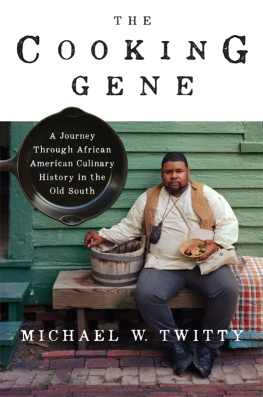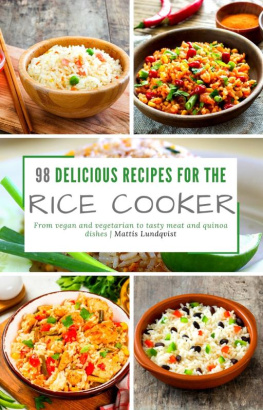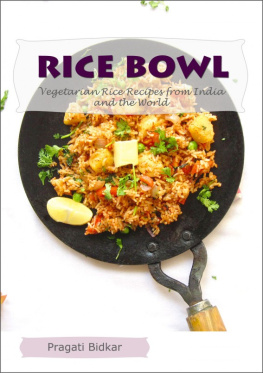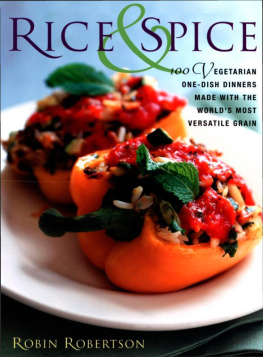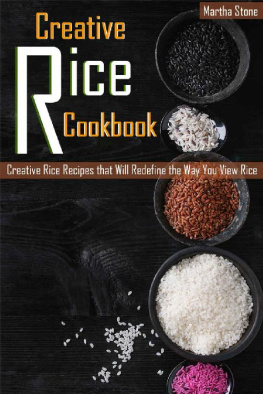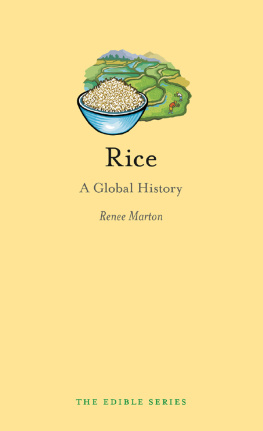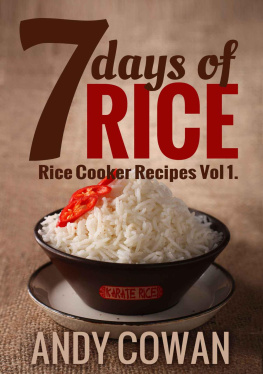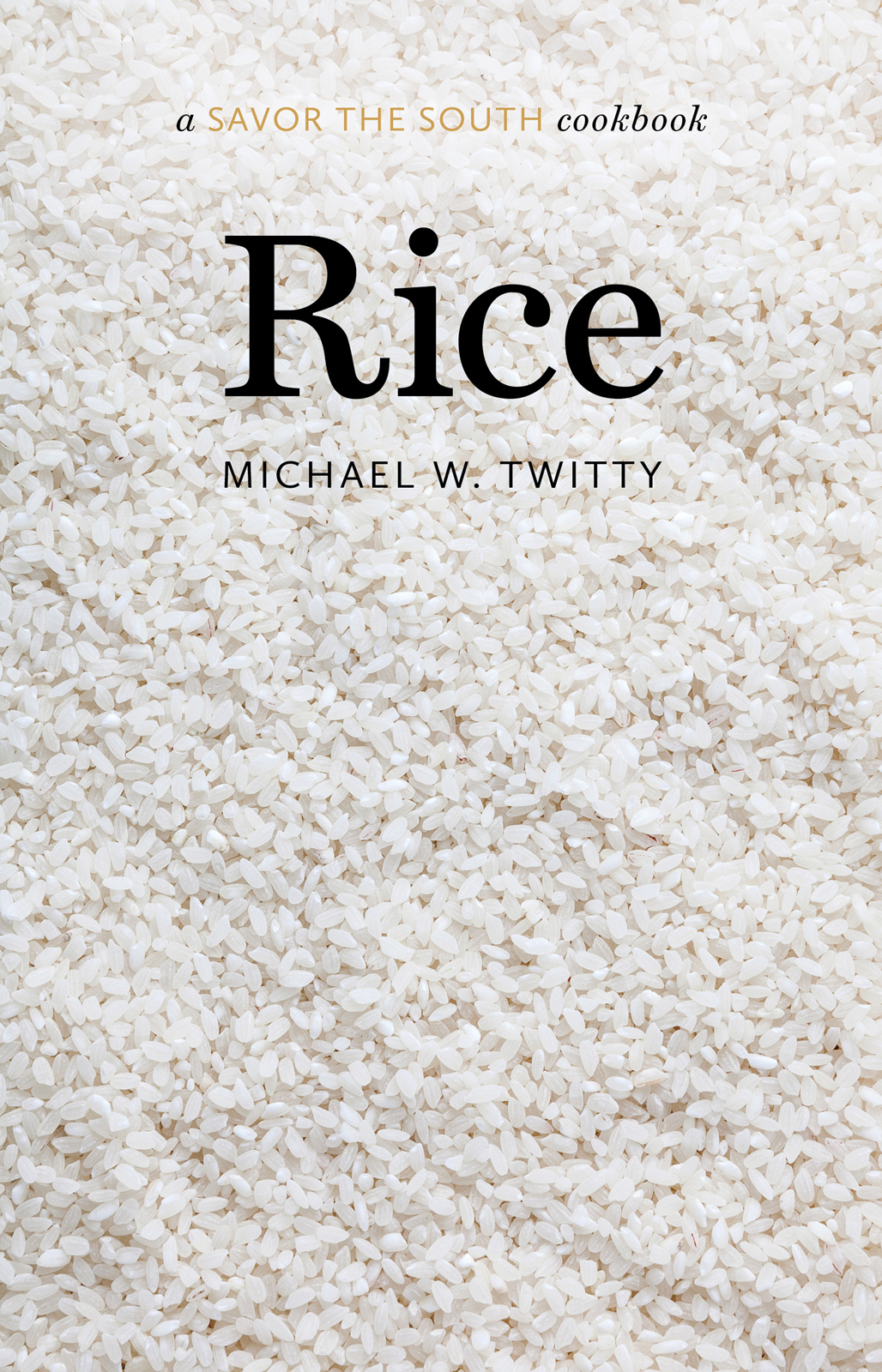Contents

a SAVOR THE SOUTH cookbook
Rice
SAVOR THE SOUTH cookbooks
Rice, by Michael W. Twitty (2021)
Pie, by Sara Foster (2018)
Ham, by Damon Lee Fowler (2017)
Corn, by Tema Flanagan (2017)
Fruit, by Nancie McDermott (2017)
Chicken, by Cynthia Graubart (2016)
Bacon, by Fred Thompson (2016)
Greens, by Thomas Head (2016)
Barbecue, by John Shelton Reed (2016)
Crabs and Oysters, by Bill Smith (2015)
Sunday Dinner, by Bridgette A. Lacy (2015)
Beans and Field Peas, by Sandra A. Gutierrez (2015)
Gumbo, by Dale Curry (2015)
Shrimp, by Jay Pierce (2015)
Catfish, by Paul and Angela Knipple (2015)
Sweet Potatoes, by April McGreger (2014)
Southern Holidays, by Debbie Moose (2014)
Okra, by Virginia Willis (2014)
Pickles and Preserves, by Andrea Weigl (2014)
Bourbon, by Kathleen Purvis (2013)
Biscuits, by Belinda Ellis (2013)
Tomatoes, by Miriam Rubin (2013)
Peaches, by Kelly Alexander (2013)
Pecans, by Kathleen Purvis (2012)
Buttermilk, by Debbie Moose (2012)

a SAVOR THE SOUTH cookbook
Rice
MICHAEL W. TWITTY
The University of North Carolina Press CHAPEL HILL
2021 The University of North Carolina Press
All rights reserved. Manufactured in the United States of America.
Designed by Kimberly Bryant and set in Miller and Calluna Sans types by Rebecca Evans.
The University of North Carolina Press has been a member of the Green Press Initiative since 2003.
Cover photo iStock/SvetlanaK
Library of Congress Cataloging-in-Publication Data
Names: Twitty, Michael, 1977 author.
Title: Rice / Michael W. Twitty.
Other titles: Savor the South cookbook.
Description: Chapel Hill : The University of North Carolina Press, [2021] | Series: A savor the South cookbook | Includes index.
Identifiers: LCCN 2020044099 | ISBN 9781469660240 (cloth) | ISBN 9781469660257 (ebook)
Subjects: LCSH: Cooking (Rice) | Cooking, AmericanSouthern style. | International cooking. | LCGFT: Cookbooks.
Classification: LCC TX809.R5 T85 2021 | DDC 641.6/318dc23
LC record available at https://lccn.loc.gov/2020044099
For Mama and Grammy, and for their ancient mothers, my ancestors from Sierra Leone
Contents

a SAVOR THE SOUTH cookbook
Rice
Introduction
Of the three grains that dominate the southern tablecorn, wheat, and ricerice is without question the most versatile. To southerners, rice is welcome at breakfast, lunch, and dinner; it works as a main dish, side dish, or snack. Theres a good reason for that: its filling, its delicious when properly prepared, and its texture and mouthfeel vary depending on the recipe; in some dishes it is crunchingly crispy, in others, soothingly smoothand theres a whole range of satisfying possibilities in between. Rice has textures, scents, tastes, and depths of flavor that make it indispensable to the cuisines of the South, from Creole and Acadian foodways to soul food to the foodways of the Low Country and Gulf Coast and the ethnic communities that have populated the region since its earliest days.
While rice has its own intrinsic grandeurconnoisseurs can tell the difference between thousands of varietiesits how rice dances with other foods at the feast that really counts to many cooks and eaters. Tomatoes plus rice, for example, equals umami pop, a rich, savory satisfaction rivaled only by the play of texture, flavor, and scent that is rice and onions. Or what about the moment when rice, paired simply with chicken, absorbs those globules of fat and jus? Rice and peas are not starch on starch; theyre two flavor sponges side by side, soaking up all the energy of the dance. My favorite rice dishes are the ones that make you feel full, satisfied, and hungry for leftovers, like red rice, whose tomato, onion, and meaty taste make it my queen of all Southern dishes. But just flip the script to go with sweet instead of savory and you have rice pudding, a dessert dish so good youre willing to burn your mouth to taste it.
Rices perfume marries well with the scent of other ingredients and amplifies what we like most about rice: it changes outfits well to suit the party. When we pair it with sugar, vanilla, cinnamon, and other fragrant elements, rice reminds us how creamy and neutralizing it can be.
Rice is unique as an ingredient, with an architecture that bids us to build a recipe that keeps its taste and texture at the center. Rice can be red, reddish-orange, green, yellow, black, or white. It has an unforgettable desire attached to it, and nostalgia and locality contribute to its longevity. Rice dishes, whether sweet, spicy, hot, cold, oniony, salty, or creamy, are the go-to food for many of us when we seek comfort. For many of us southerners, no other ingredient tastes this much like home.
At the same time, rice is absolutely a global food. Its a staple of infinite variety, and its history weaves in and out of the global story that is southern culture. From enslaved people from West Africa, to Vietnamese and Kurdish refugees, to Canary Islanders and Italians, those who brought rice dishes from their homelands with them to the South also embodied narratives laden with struggle and survival, migration, movement, and family tradition. Rice also bonds the Lower South with much of the rest of the planet, for whom a meal without rice is, frankly, not a meal at all.
Southern rice tells a bigger and richer story than many of its sister grains and dishes, though all are uniquely cherished. Corn tells how a Native American staple went from versatile fare to a food with limited notes. Wheat is part of the tale of European colonization, with bread being central to the spiritual and economic life of western European settlers. Rice, on the other hand, is where Africa and Asia come in. Unlike its sisters, rice for many southerners engenders very sharp feelings of nostalgia and food memory. Rice with butter and sugar often pushes grits aside in the morning, bread made with rice can rival dinner rolls and cornbread, and rice pudding gives cake and pie a run for their money.
And we havent even gotten to the part where rice makes its appearance across the entire table, from soup (its a must in gumbo) to side dish (have you tried crab rice?) to main dish (jambalaya, a rival of risotto and pilau) to nuts (pecan-studded rice).
My Own Story
Rice has played a pivotal role in shaping my identity. My favorite rice dish growing up was my Alabama-born grandmothers red rice (often misnamed Spanish rice), a tasty, tomato-rich rice pilau with bell peppers, onions, and spices. Little did I know then that if you followed that one dish back through all of the mamas and grandmas that came before her, you would go overland from Alabama to South Carolina and then across the Atlantic. My grandmothers great-grandmother was born in Charleston, the center of red rice country, and her great-grandmothers grandmother was born in Sierra Leone, among the Mende people. To this day, one of the staple dishes of Sierra Leone is jollof rice, the West African antecedent of red rice. Prepared in different ways up and down the Atlantic world rice belt, todays versions of red rice essentially maintain the same orange-red glow, as well as a taste that is pleasantly warm and pairs well with just about any leafy green or protein.


